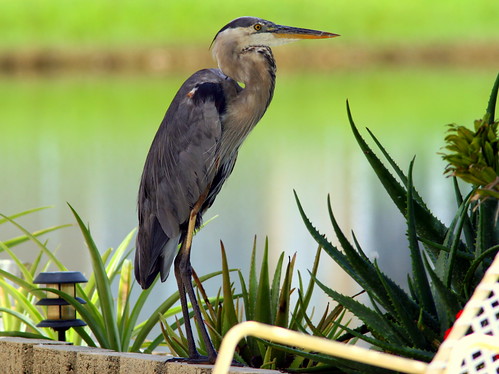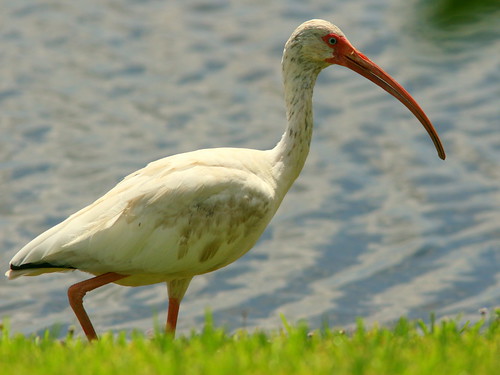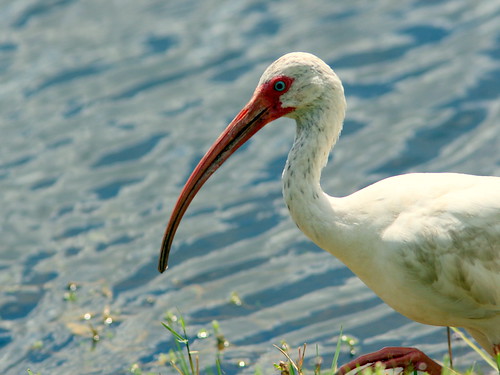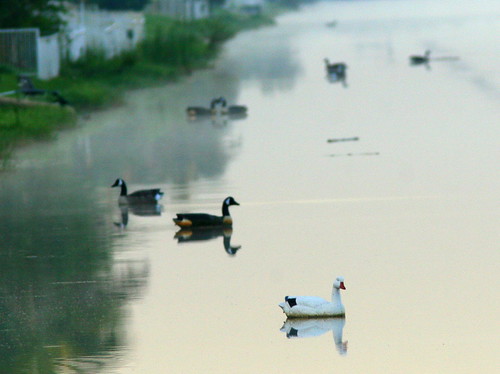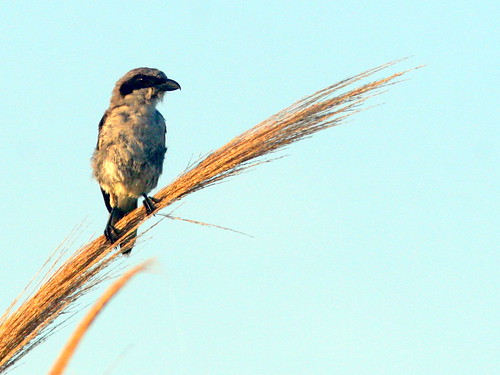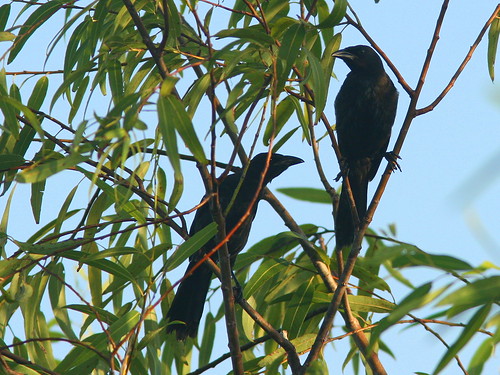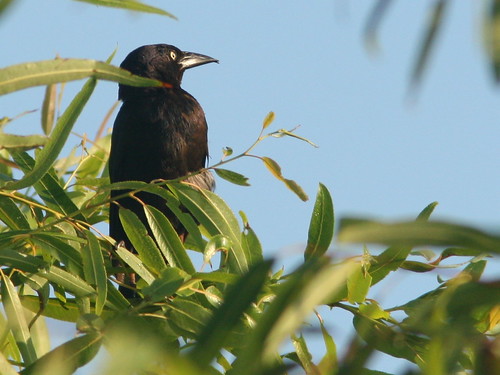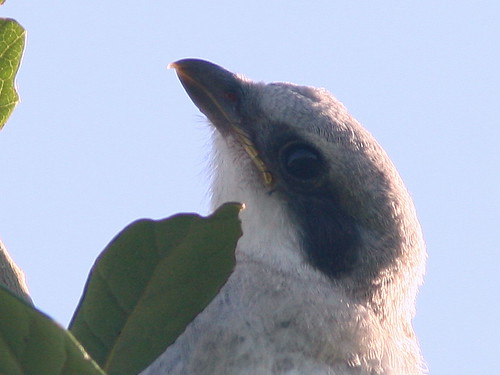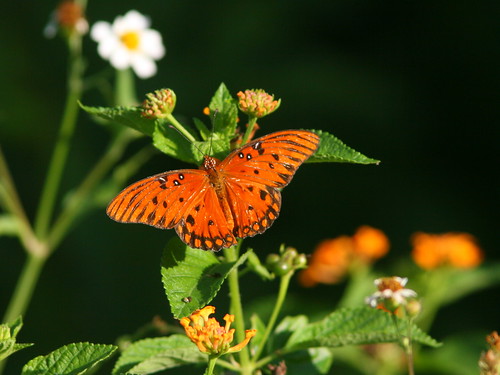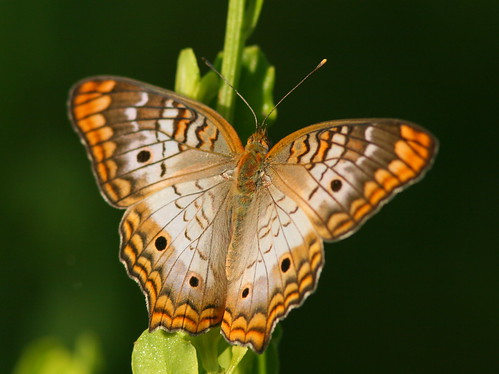Posted by: Ken @ 7:55 am
Wow, it’s been so hot in Florida this week! The heat was especially oppressive yesterday afternoon, and a Great Blue Heron spent over two hours roosting in the shade on our patio. It was only 20 feet away from our back window, too close for my long lens, so I “zoomed out” by stalking around the side of the house, where I could fit the entire bird in my viewfinder
Walking around the house to get a shot of the heron, I disturbed this White Ibis that had been resting in the shade of one of our mango trees. It still shows traces of juvenal plumage.
Note how the green grass reflects off the ibis’ breast:
Look at those blue eyes!:
It has been so hot here in South Florida that, instead of going out after breakfast, Mary Lou and I have been taking our “power walk” at about 5:00 AM each morning. Having failed for several days to attain BirdChaser’s “Birder’s Recommended Daily Allowance” (RDA)
Starting out, there was no wind, and the temperature was in the high eighties, almost tolerable. Before finishing the quarter-mile walk along the gravel road that leads to the West Miramar Environmentally Sensitive Land (ESL), I had already logged ten species, halfway to my target. A Blue Jay greeted me as I left the house, Mourning Doves flew over, and both Rock and Eurasian Collared-Doves cooed from rooftops. One or two Northern Mockingbirds sang rather weakly, Common Nighthawks “peent-ed” and boomed, a Loggerhead Shrike added its nasal call, and Boat-tailed Grackles filled the air with raucous singing. White Ibises and a Muscovy Duck probed for food around a garbage can that had probably been turned over by a mischievous Raccoon.
The sky had brightened a bit by the time I arrived at the edge of the canal that borders the ESL. From some distance, I captured this photo of a Great Egret, roosting in a Royal Palm at the edge of the canal (processed in Black and White with soft focus added):
Decoys are used as floats that keep the uptakes of lawn irrigation systems away from the muck at the bottom of the canal. Residents without lake frontage have to dig shallow wells for sprinkler systems. Most are Canada Geese, but one homeowner added diversity.
Faux Snow Goose on still water:
Quite a few birds showed evidence of the post-breeding molt, such as this Blue Jay, whose crest is almost non-existent: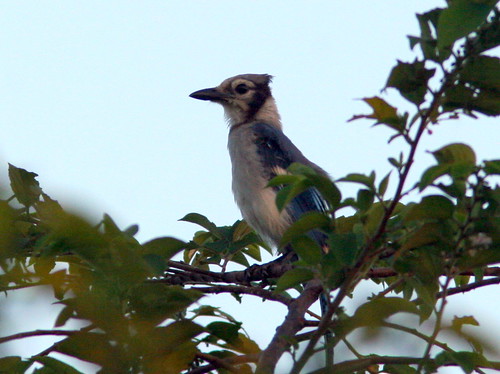
This bedraggled shrike’s feathers are worn and in disarray, ready for replacement after bringing up the youngsters:
There was movement about a hundred yards up the trail along the canal. I approached slowly and identified a pair of ground-doves, but they were very timid and flew as soon as they noticed me. My photos did not turn out very well in the harsh morning light. Click on the image to to see the characteristic rufous on its wings as it flies away.
Distant Common Ground-Dove:
As the sun came up, the temperature quickly rose into the mid-nineties. As expected this time of the year, the birds were conserving energy to produce new feathers. There was near absence of bird song. A few Eastern Towhees and Northern Cardinals did sing in the distance, a Green Heron squawked as it flew over. A Red-bellied Woodpecker called from palm trees across the canal. When I reached the path that transects the wetland, I found it muddy and overgrown– too likely to harbor hidden Cottonmouth Moccasins, so I did not venture any further. The only stand of fairly mature hardwoods is about a quarter of a mile into that area, dashing my hope of seeing a few early warblers. I had seen a Yellow-billed Cuckoo from this vantage point only last week, but it did not show this time. Neither did the Yellow-crowned Night-Herons and the Little Blue and Tricolored Herons.
By then I had almost emptied my half-liter water bottle. Deer flies began ignoring the insect repellent, diluted by perspiration. A family of Common Grackles was gathered in a tree along cross trail’s “borrow ditch.”
Look closely. Note that the young Common Grackles have dark rather than yellow eyes:
Here is a yellow-eyed adult Common Grackle for comparison. Note that its bill is slightly crossed, probably a malformation:
Grackle food– many Halloween Pennants coursed over the sawgrass:
Note signs of feather wear on the tail of this male Red-winged Blackbird, as the post-breeding molt approaches:
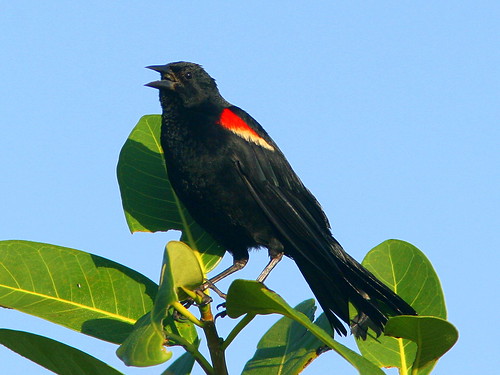
Fresh out of the nest, a fledgling Loggerhead Shrike flew into a small tree right next to the trail:
The baby shrike eyed me curiously:
After the shrike flew off, an immature Northern Cardinal took its place. Note that its bill is changing from black to the reddish color of the adult birds: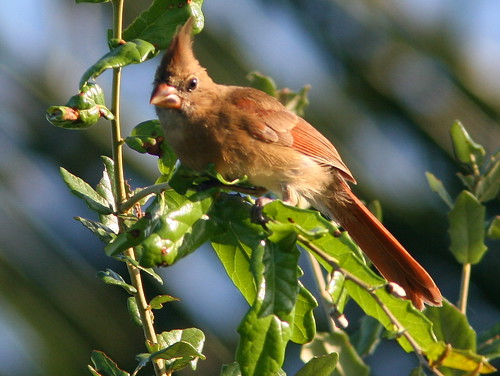
Butterflies brightened an otherwise rather dull day for birding. A Gulf Fritillary visits a flower:
White Peacocks were abundant:
I had identified Barn and Tree Swallows among the dozen or so swallows I noticed. Two small birds flew over– certainly warblers, but I could not tell their species. Only twenty species– I had barely attained my Birder’s RDA. Later that day, back home, a Snowy Egret walked the edge of our lake, and a Black Vulture glided by. Adequate nutrition, but not quite satisfying!













